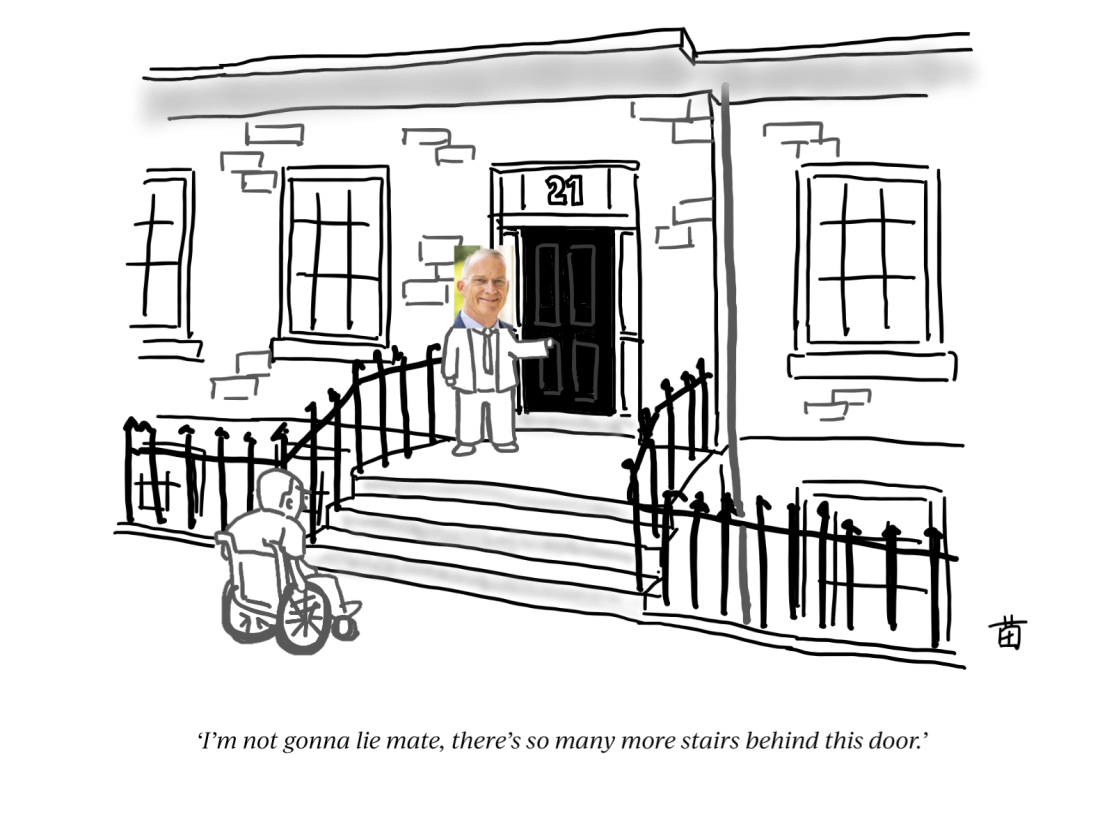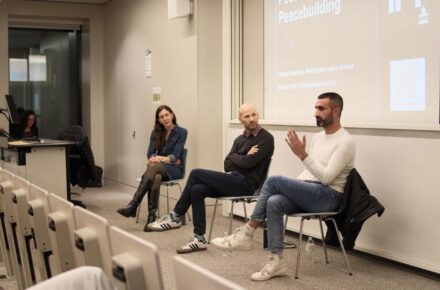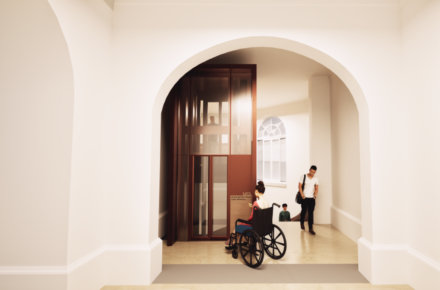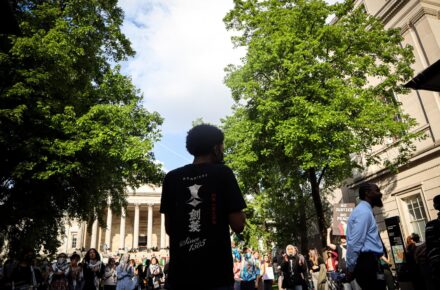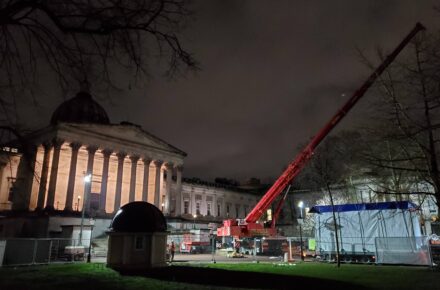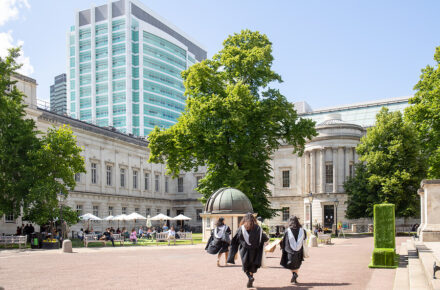Finley Littlefair, Yash Zodgekar, Emma Begley-Collier, and Sirjan Narang
From the picture-perfect Portico to the houses lining Gordon Square, the historical charm of many of UCL’s oldest buildings is what makes them so iconic. However, this allure comes at the cost of accessibility. These buildings often lack lifts, automatic doors, accessible desk space, and many other necessities that might be required by UCL’s disabled students.
Houses 20-26 Gordon Square, home to both the History and Art History departments, are refurbished townhouses which lack lifts, have incredibly narrow corridors and have awkward doorways which make them particularly inaccessible.
With the only successful accessibility modification being an accessible bathroom in the basement of one of the houses, the general inaccessibility of the department is ‘plain to see’, as noted by a postgraduate History student who has a disability.
UCL has spent £1.25bn on accessibility consultation with AccessAble for new builds. Yet, places like the Gordon Houses demonstrate that this spending has yet to improve many of UCL’s older buildings in regular use on campus.
In fairness, it is difficult to imagine how UCL could improve the accessibility of the Gordon Houses. Given they date back to the 19th century, they would require a remodelling so thorough it would resemble a rebuild. However, a consultation of Camden Council’s planning regulations illustrates that there are feasible ways to make buildings like the Gordon Houses more accessible.
The Gordon Houses are Grade II listed buildings located within the Bloomsbury Conservation Area, where more stringent building regulations apply. However, Camden Council’s restrictions in this area mostly affect building exteriors, asserting that these must continue to represent the historical character of the area.
Therefore, UCL could feasibly refurbish the department’s interiors to be more accessible as long as their historic exteriors are preserved, as has been done with the similar houses across Gordon Square which encompass UCL Institute of the Americas (IoA) and some Birkbeck Departments. Following in the footsteps of Birkbeck and the IoA, an internal remodel of the Gordon Square houses would greatly improve the experience of disabled students studying at UCL. Improving student experience for a marginalised group would certainly be worth the cost, but it’s unclear whether UCL has considered these options.
Nevertheless, UCL’s accessibility strategy seems to have prioritised new expensive developments like UCL East over refurbishing existing buildings. There is a great irony in the newly built, fully-specialised student centre being within fifty metres of Gordon Square’s heavy, non-functional power assisted doors with wooden frames which makes wheelchair access even harder.
Ultimately, details like this highlight the tension between UCL senior management and its departments. Antonio Sennis, the Head of Department for UCL History, told The Cheese Grater that the department ‘consistently draw[s] the attention’ of UCL Estates to help make the Gordon Square houses more accessible. Sennis added that the department’s Equality, Diversity, and Inclusion Committee has set accessibility issues as a priority. It is not Dr Sennis’ fault however, as accessibility and structural readjustment of buildings is a centrally controlled issue.
It is quite telling of how bad the situation is in the Gordon Square houses when one learns of how a postgraduate teaching assistant (PGTA) opted not to formally register as disabled because ‘it just wasn’t worth [the effort]’. Instead, they relied entirely on a ‘very good working relationship’ with the department, so their lessons could be held in a room they described as the ‘least inaccessible’. The PGTA’s choice to fully circumvent the accessibility administration is evidence of UCL’s systemic failings.
Challenges to accessibility are not only contained within the Gordon Square houses, they also impact several other departments within UCL. Many lack essential features like lifts, step-free access, or safe evacuation plans for wheelchair users. A third-year philosophy student, temporarily using a wheelchair due to an injury, described his experience as ‘isolating’ and highlighted the University-wide accessibility struggle.
He felt that the most accessible building was the Roberts Building, the modern home of the Engineering Department, because it has a disabled lift. The fact that a STEM faculty building was most accessible raises concerns about the long-term experience of disabled students not based in such departments.
Only six out of seventeen student study spaces are completely accessible to disabled people, including wheelchair users. These are the Bartlett Library, the Language and Speech Science Library, the Student Centre, Special Collections, and the UCL East library. Troublingly, nine out of the seventeen spaces do not have safe evacuation available for wheelchair users. This is incredibly concerning given that all students should be able to feel safe whilst studying at UCL.
Alongside this, many of the study spaces are still lacking disabled toilets, lifts, step free access. The IOE Library lacks a lift and accessible toilets. The Cruciform Hub, Great Ormond Street Library, and Archeology Library are not accessible in the case of emergency evacuation.
All this leaves only a limited amount of study space options open for disabled students. UCL’s approach to solving a lot of these issues, especially that of safe evacuation, is contained within a Personal Emergency Evacuation Plan (PEEP).
A PEEP is a collaborative effort between disabled students, UCL departments, UCL Estates or Student Accommodation, and UCL Safety Services. It acknowledges the lack of accessible escape routes and outlines various strategies to ensure the safety of disabled students during emergencies.
These strategies include more immediate plans like making sure disabled students are near ground floor exits and assigning staff or student buddies for assistance. The alternative evacuation methods are more intense, involving evacuation chairs, refuges, and potentially evacuation mattresses, with proper training and planning emphasised for their safe and efficient use.
UCL’s PEEP is modelled to suit the needs of the individual and accounts for a wide array of factors. However, the simplicity and value of obtaining a PEEP is still debatable. Given that some students, like the History PhD candidate, felt it “wasn’t worth” registering as disabled, it appears that the process is not as straightforward as it should be.
She went on to explain that the process was thankless because registering as disabled at UCL “requires a lot of proof of the disability”. Student disability services are commonly perceived as being inaccessible due to the intensive evidence required to provide concessions. These demands are ironic given that they are difficult to attain due to the disabilities people have. Like many issues at UCL, it seems like registering as disabled is just another thing that involves too much bureaucratic entanglement.
In 2010, Parliament passed the Equality Act, a comprehensive act which offers legal protection from discrimination, and this includes discriminating against disabled individuals. Importantly, it extended previous disability anti-discrimination laws to include indirect discrimination, i.e. policies or practices that may not target a group, but nonetheless disadvantages them.
It also laid out the threshold for when reasonable adjustments must be made, like when “a physical feature puts a disabled person at a substantial disadvantage” in comparison with people who are not disabled.
Following the 2010 Equality Act, UCL introduced the 2034 strategy which is distant enough to be near-irrelevant to current students facing accessibility barriers. Part of the far-off strategy is inclusive design. It directly states the following aims: to create a physical environment that does not separate people based on disability; to ensure disabled people have choice in what they participate in; to ensure safe evacuation in case of an emergency regardless of disability. These are all crucial aims, to be sure, but as of 2018, a UCL report admitted that there is “not a clear picture of the accessibility of the built environment at UCL.”
The report stated that “some information is provided by the Accessible guides and there are some access audits of buildings”, but they also acknowledge that the guides give a “quantitative” representation of accessibility and are not indicative of how effectively accessibility efforts are being carried out. Still unknown are questions of accessibility within UCL classrooms and lecture theatres with wheelchair seating or an induction loop.
It is clear that UCL needs to make substantive improvements to create a truly accessible campus for disabled staff and students. When disabled students cannot access a significant proportion of the same spaces as their peers, their experience of university becomes disproportionately inconvenient for them to navigate, leaving them isolated and vulnerable.
Fully rectifying this issue is no doubt a difficult endeavour in financial terms – no student in the Gordon Houses wants to end up commuting 45 minutes to UCL East. Nevertheless, increasing the accessibility of campus is a vital exploit to ensure all students can experience UCL equally and fully.
This article appeared in CG 87.

